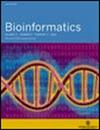MUSE-XAE: MUtational Signature Extraction with eXplainable AutoEncoder enhances tumour types classification.
IF 4.4
3区 生物学
Q1 BIOCHEMICAL RESEARCH METHODS
引用次数: 0
Abstract
MOTIVATION Mutational signatures are a critical component in deciphering the genetic alterations that underlie cancer development and have become a valuable resource to understand the genomic changes during tumorigenesis. Therefore, it is essential to employ precise and accurate methods for their extraction to ensure that the underlying patterns are reliably identified and can be effectively utilized in new strategies for diagnosis, prognosis and treatment of cancer patients. RESULTS We present MUSE-XAE, a novel method for mutational signature extraction from cancer genomes using an explainable autoencoder. Our approach employs a hybrid architecture consisting of a nonlinear encoder that can capture nonlinear interactions among features, and a linear decoder which ensures the interpretability of the active signatures. We evaluated and compared MUSE-XAE with other available tools on both synthetic and real cancer datasets and demonstrated that it achieves superior performance in terms of precision and sensitivity in recovering mutational signature profiles. MUSE-XAE extracts highly discriminative mutational signature profiles by enhancing the classification of primary tumour types and subtypes in real world settings. This approach could facilitate further research in this area, with neural networks playing a critical role in advancing our understanding of cancer genomics. AVAILABILITY MUSE-XAE software is freely available at https://github.com/compbiomed-unito/MUSE-XAE. SUPPLEMENTARY INFORMATION Supplementary data are available at Bioinformatics online.MUSE-XAE:MUtational Signature Extraction with eXplainable AutoEncoder 可增强肿瘤类型分类。
动机突变特征是破译癌症发生的基因改变的重要组成部分,已成为了解肿瘤发生过程中基因组变化的宝贵资源。因此,必须采用精确的方法来提取突变特征,以确保可靠地识别基本模式,并有效地用于癌症患者的诊断、预后和治疗新策略。我们的方法采用了一种混合架构,由一个非线性编码器和一个线性解码器组成,前者可捕捉特征间的非线性相互作用,后者可确保主动特征的可解释性。我们在合成和真实癌症数据集上对 MUSE-XAE 和其他可用工具进行了评估和比较,结果表明它在恢复突变特征图谱的精确度和灵敏度方面都表现出色。MUSE-XAE 在真实环境中提高了原发性肿瘤类型和亚型的分类能力,从而提取出具有高度鉴别性的突变特征图谱。这种方法可以促进该领域的进一步研究,神经网络在推动我们对癌症基因组学的理解方面发挥着至关重要的作用。AVAILABILITYMUSE-XAE 软件可在 https://github.com/compbiomed-unito/MUSE-XAE.SUPPLEMENTARY 免费获取信息补充数据可在 Bioinformatics online 上获取。
本文章由计算机程序翻译,如有差异,请以英文原文为准。
求助全文
约1分钟内获得全文
求助全文
来源期刊

Bioinformatics
生物-生化研究方法
CiteScore
11.20
自引率
5.20%
发文量
753
审稿时长
2.1 months
期刊介绍:
The leading journal in its field, Bioinformatics publishes the highest quality scientific papers and review articles of interest to academic and industrial researchers. Its main focus is on new developments in genome bioinformatics and computational biology. Two distinct sections within the journal - Discovery Notes and Application Notes- focus on shorter papers; the former reporting biologically interesting discoveries using computational methods, the latter exploring the applications used for experiments.
文献相关原料
| 公司名称 | 产品信息 | 采购帮参考价格 |
|---|
 求助内容:
求助内容: 应助结果提醒方式:
应助结果提醒方式:


